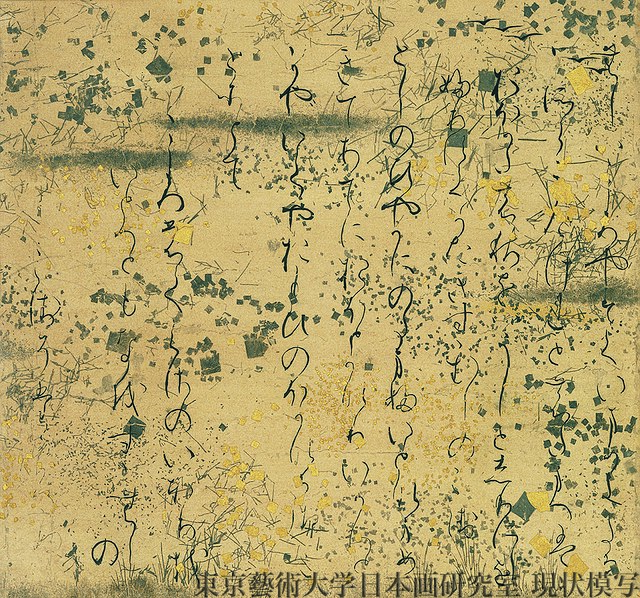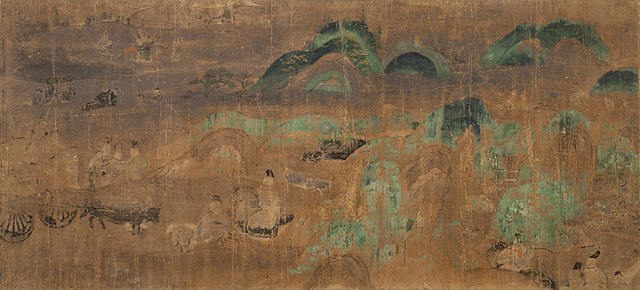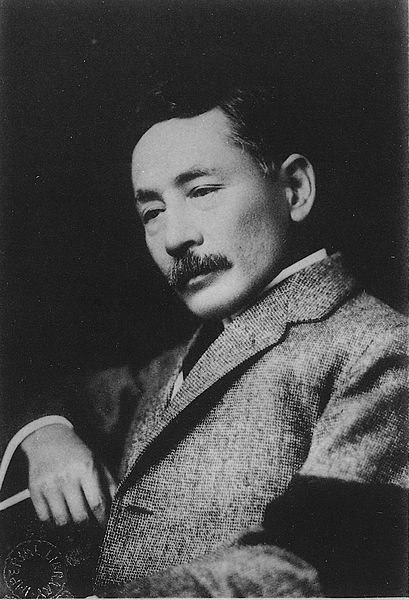The Tale of Genji , also known as Genji Monogatari is a classic work of Japanese literature written in the early 11th century by the noblewoman, poet, and lady-in-waiting Murasaki Shikibu. The original manuscript, created around the peak of the Heian period, no longer exists. It was made in "concertina" or orihon style: several sheets of paper pasted together and folded alternately in one direction then the other.
Written text from the earliest illustrated handscroll (12th century)
Murasaki Shikibu, illustration by Tosa Mitsuoki who created a series of illustrations of The Tale of Genji (17th century)
Chapter 15 – Yomogiu (蓬生, "Waste of Weeds"). Scene from the 12th-century illustrated handscroll Genji Monogatari Emaki kept at the Tokugawa Art Museum.
Chapter 16 – Sekiya (関屋, "At The Pass")
Japanese literature throughout most of its history has been influenced by cultural contact with neighboring Asian literatures, most notably China and its literature. Early texts were often written in pure Classical Chinese or lit. 'Chinese writing' , a Chinese-Japanese creole language. Indian literature also had an influence through the spread of Buddhism in Japan.
Murasaki Shikibu, the author of The Tale of Genji
Matsuo Bashō, a haikai poet
Image: Mori Ogai in the atelier of Sculptor Takeishi Kozaburo in 1916
Image: Soseki







